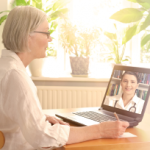How is telemedicine reshaping rheumatology care for a wide spectrum of patients in the era of COVID-19? The Rheumatologist interviewed Kanika Monga, MD, a second-year rheumatology fellow who rotates between Lyndon B. Johnson (LBJ) Outpatient Center/Harris Health System and a private rheumatology clinic at UT Physicians, Houston. She discussed why telemedicine is here to stay as a tool that expands access to care, how rheumatology fellowship training programs may incorporate telemedicine into curricula and why the physician-patient bond must be protected as healthcare embraces this new technology.
Q: How and when did you ramp up use of telemedicine due to the COVID-19 pandemic? What type of technology do you typically use?
The stay-at-home order in Houston went into place around March 24. So we tried to ramp up telemedicine immediately. At first, we relied on telephone visits while we were ramping up our televideo visits. At UT Physicians, we use InTouch as our virtual care platform. At LBJ, we use MyHealth.
By April at UT Physicians, we saw 99% of our patients through telemedicine while still maintaining our total patient targets, which were comparable to pre-COVID-19 times. At LBJ, 60–70% of the total visits were seen via telemedicine.
Q: What are some of the benefits and challenges of telemedicine in rheumatology?
The benefits include access to providers and specialists for patients in underserved or geographically distant areas. During the public health crisis, it allows the most vulnerable patient population to continue receiving care at the click of a button. Telemedicine has helped improve patient care by improving follow up and compliance.
For example, in our patient population, mobility can be a major issue because of the underlying disease. So telemedicine improves care for patients who struggle to make it to appointments. Many patients in our county depend on arranged and/or public transportation. Many must request a portion of their day off work—so telemedicine is more convenient.
Challenges include the different available platforms and their usability. Although some patients are tech-savvy, some are not. This [factor] is a challenge, especially when using platforms that have many steps involved. Some [payers] require the use of specific platforms for telemedicine visits, and these may not always be the most user friendly.
Telemedicine also highlights general health inequities that may already exist in the population. Patients who are older, less educated or from a lower socioeconomic household may not have the technology available to enable telemedicine visits.



